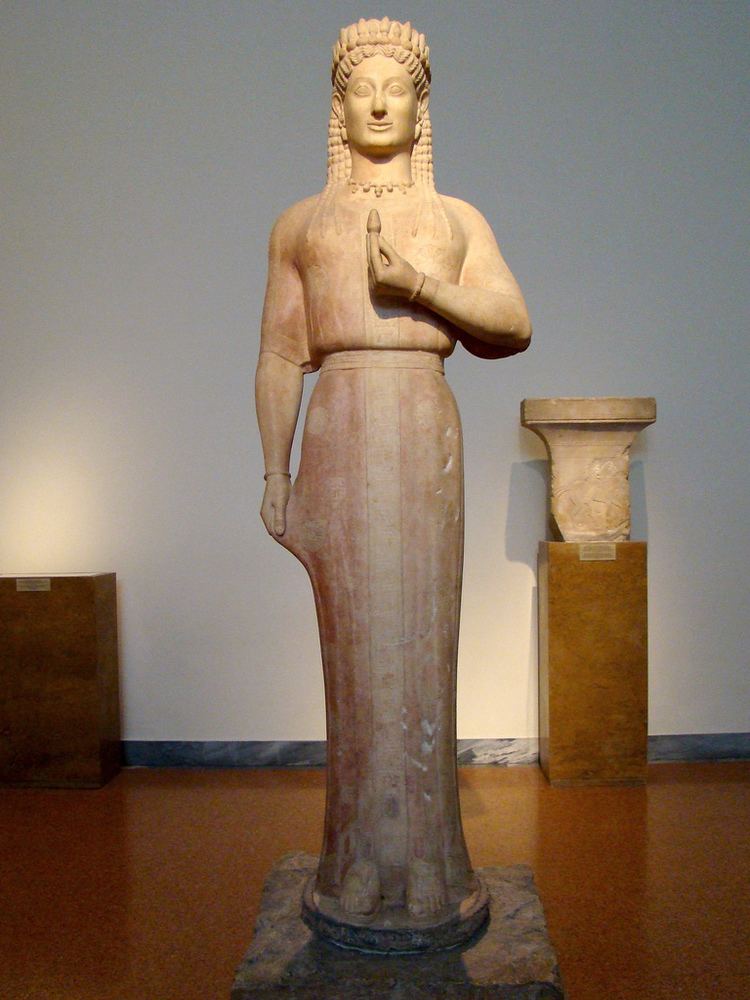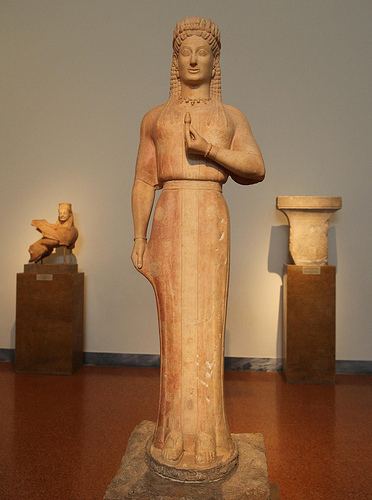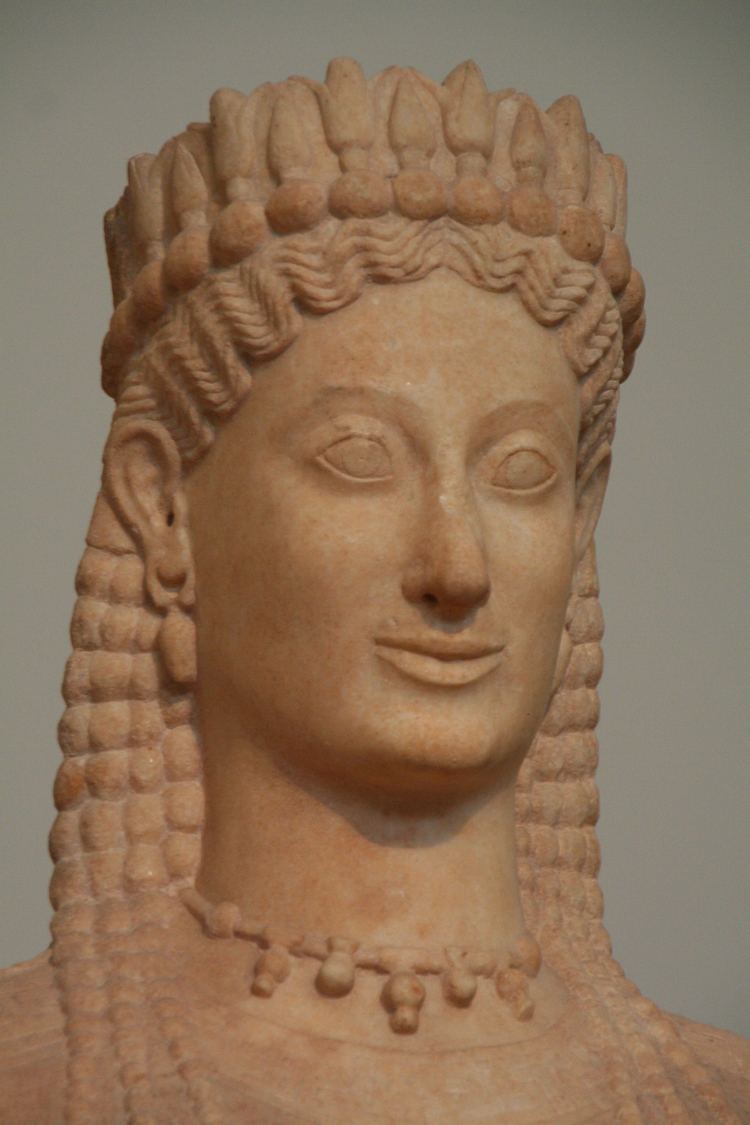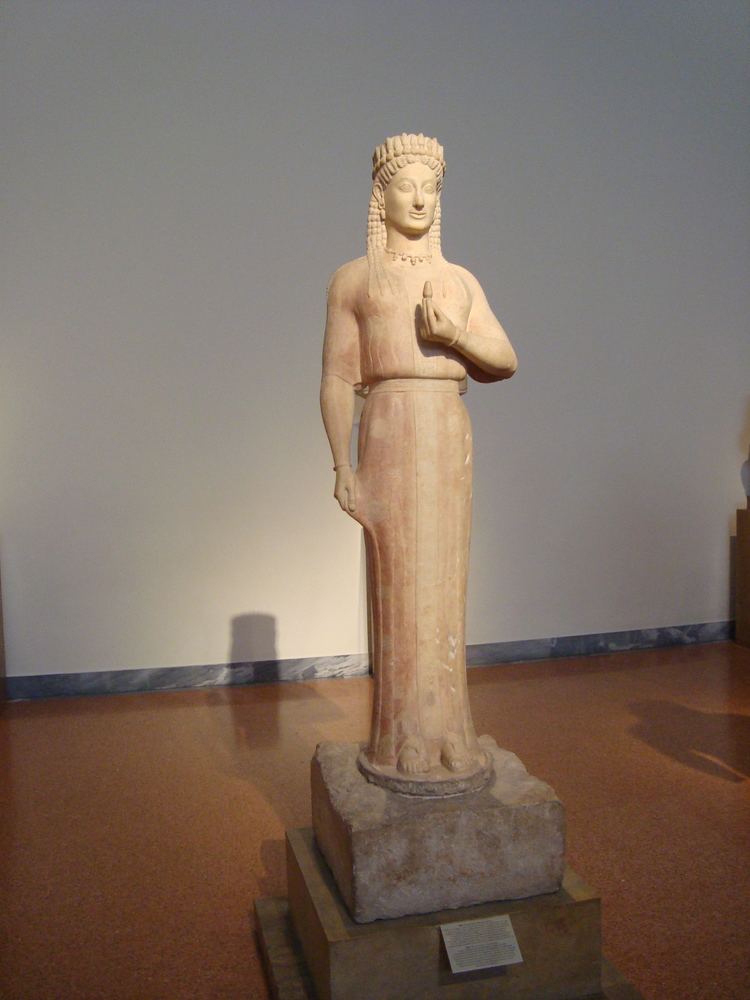Year 541 BC | ||
 | ||
Location National Archaeological Museum of Athens Similar Dedication of Nikandre, Peplos Kore, Kroisos Kouros, Sounion Kouros, Chigi vase | ||
The Phrasikleia Kore is an Archaic Greek statue by the artist Aristion of Paros created between 550 and 540 B.C. It was found on a tomb in the ancient city of Myrrhinus (modern Merenda) in Attica. Due to its exceptional state of preservation, it is one of the most important works of Archaic art.
Contents

History

Michel Fourmont, who visited Greece in the years 1729–1730, described a block of marble with an inscription that was found in the church of Panagia (All Saints) of Merenda. The inscription had been rendered illegible before being used in the church, but it was able to be reconstructed.

In 1968, the block was removed and placed in the Epigraphical Museum of Athens. Four years later, the archaeologist Efthymios Mastrokostas discovered two marble statues in the tombs at Myrrhinus, a kouros and a kore, which obviously belonged with the same inscription. They immediately remembered the base with the inscription that had been found by itself 200 metres (660 ft) away, in the church. In the lower part of the statues were found pieces of lead that had once attached them to their base. Based on this mass of lead, which exactly fit the marble block with the inscription, the fact that they belonged together was clearly demonstrated. Although the name of Aristion had been known from being mentioned in inscriptions, none of his work had been identified until Phrasikleia was found. The inscription may be the earliest known example of stoichedon, in which evenly spaced letters are aligned both horizontally and vertically. The statue is now in the National Archaeological Museum of Athens and is displayed in Room 11, catalog number 4889.
Description and style

The statue, of Parian marble, is 211 centimetres (6.92 ft) high and rises on a pedestal 26 centimetres (10 in) high. As the inscription suggests, it depicts a young woman who died unmarried and therefore must be known forever as a maiden. She is standing erect and wearing a long peplos, decorated with flowers and meanders. Around her waist she wears a girdle. The foreparts of her feet and sandals are visible. Her right arm hangs down and firmly holds onto her peplos. Her left arm is bent in front of her body and holds a still-unopened lotus flower. On her head she wears a garland of flowers, round about her neck a necklace, and on each arm a bracelet.

It is possible to see traces of the original polychrome. In the Gods in Color exhibit, a reconstruction of the coloring is presented.



